GIA vs AGS Cut Grading – Which is Better?
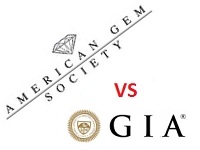
Which lab is better? AGS or GIA?
In the industry, AGS (American Gem Society) and GIA (Gemological Institute of America) are considered to be 2 of the most reliable gemological labs in the world. Interestingly, they were both founded by the same man who goes by the name of Robert Shipley.
GIA is most famously known for pioneering the grading process for diamonds. Their system standardized the nomenclature used in the diamond industry and is emulated by almost every other gemological lab in the world. GIA also has the greatest reach with laboratories based in every major location of diamond cutting and trading – Belgium, New York, Hong Kong, India and etc…
Being relatively new in the game, AGS is better received in the US than other parts of the world. Outside the United States, AGS certificates are often used by jewelry companies to help market and brand their products. For example, you will find AGS reports for international brands like Hearts on Fire.
In my professional point of view, these are the only 2 labs that provide precise and consistent grading services. I would only consider buying a diamond IF it had been graded by either lab.
And, I am not alone in this thinking. In a recent expert round up I did, professionals I interviewed also stated that the source of grading report as an important attribute which affects their own purchases.
From a consumer’s standpoint, you might be more interested to find out what are the differences between AGS and GIA in terms of cut grading. I will talk about this in a moment.
American Gem Society – Paving the Way for Ideal Cuts
AGS prides itself as being the pioneer of the ideal cut grading for round diamonds. They were also the first in the world to apply a scientific vetted methodology for analyzing cut quality. AGS uses a numerical scale of 0 to 10 to describe a diamond’s cut quality; with lower numbers being of higher quality.

The highly sought-after triple zero (ooo) ideal cut ratings.
Here’s a little history about cut grades and their evolution. Back in the 1990’s, the only way for a diamond to attain an “ideal cut” grade was to send the diamond to AGS and to meet the proportions guidelines set by them.
At that time, the rise in AGS’s popularity stemmed from being able to offer a detailed cut rating which the other labs couldn’t do so. However, due to competition from GIA’s five-grade cut rating system in 2006, AGS eventually saw a drastic reduction in their market share over the years.
GIA – Gemological Institute of America
GIA is currently the most well-known grading lab in the industry. Top tier GIA diamonds receive a “triple excellent grade” – meaning that the stone has achieved an excellent rating for all 3 aspects of polish, symmetry and cut. In the AGS system, the equivalent rating is known as “triple ideal (000)“.
Ironically, when GIA introduced their new cut grading system in 2006, it was highly criticized for being “lenient”. This was due to the wide range of proportions allowable for a diamond to be rated as triple excellent.
Because of this, cutters were able to “work the system” and easily obtain a nice looking “excellent cut rating” for a diamond which may not be cut to the best standards.

AGS vs GIA – What’s the Difference in Their Approach to Cut?
Both GIA and AGS apply proportion-based grading techniques when judging the overall cut quality of a diamond. Besides utilizing computer algorithms, GIA also applies an observational aspect by having trained gemologists physically inspect a diamond for brightness, fire and patterning. This system is pretty much on par with the AGS Gold report.
On the other hand, AGS offers a superior level of performance based grading report in its “Platinum Diamond Quality Document”. In order to determine light performance, they run a 3-D analysis of the diamond with their proprietary ray tracing software.
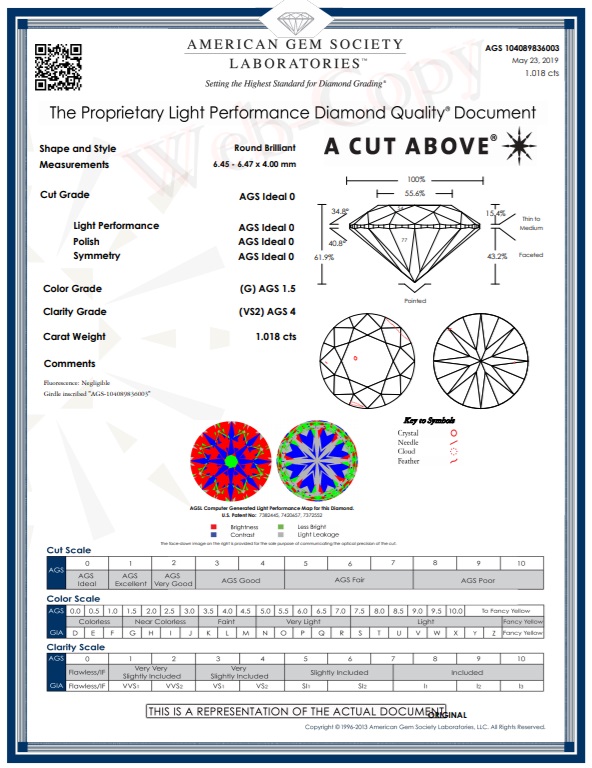
AGS report #104089836003
To a certain degree, AGS utilizes a more technologically advanced grading method where every single facet is considered in the assessment. Whether big or small, every cutting mistake or design flaw on the diamond will show up as areas of lesser brightness, inconsistent contrast patterning or light leakage.
The other benefit of the AGS system is that it is scientifically vetted and can be applied to different diamond shapes like princess, oval, emerald, Asscher and even proprietary shapes.
In contrast, GIA only offers their cut assessment for round diamonds which severely limits the amount of information for fancy cut diamonds.
A Lab Report is Useful But It Doesn’t Reveal Everything
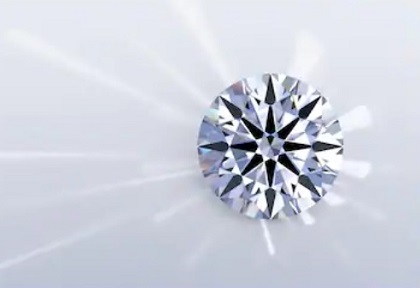
A lab report doesn’t reveal how the diamond looks like exactly.
In my opinion, both laboratories are equally as good as each other in terms of grading standards. For the general consumer, these are the only 2 labs that you should consider when purchasing a diamond. However, you shouldn’t get too carried away by the different nomenclature used by these 2 labs.
There could be times where an AGS ideal cut might not perform as well as a GIA excellent cut diamond. Vice versa, a GIA excellent cut diamond might sometimes not perform as well as an AGS ideal cut. More importantly, 2 diamonds graded with AGS ideal doesn’t mean that both are equally good.
The point I am trying to get through here is that no lab is perfect. While the AGS report has an edge in the grading diamonds for light performance and provides more information for the consumer, it isn’t an end all be all.
Confused? Let me give you an analogy to help you understand this. For example, 2 students both attain an A in their examination. However, one student’s A could be based on a score of 79/100 while the other student’s A grade was due to a score of 96/100. Just because both students got A’s in their exams doesn’t mean that they are equally smart.
And that is the truth behind the cut grades you see on a piece of paper. Besides the cut grades listed in a lab report, the use of supplementary tools like an Idealscope or ASET scope would offer a more objective way of determining a diamond’s optics.
How Jewelers Try to Portray Their Diamonds Differently
Here are some interesting perspectives about the diamond certificate and grading lab. If you had been shopping in local stores or large jewelry chain establishments, you might have observed huge efforts being used to market diamonds with fanciful names – CanadaMark, Chosen, Destinee and the list goes on.
Usually, these branded diamonds are nothing more than the standard 57 facets round diamonds that had received an excellent cut rating by GIA or an ideal cut rating by AGS. Simply by slapping on a fancy sounding name to them, these stores are going to charge you an arm and leg by making you believe their “premium cuts” are exclusive and unavailable anywhere else.
Here’s another marketing trick many jewelers in the diamond business use. Due to AGS’s cut grading system which uses nomenclature like Ideal – Excellent – Very Good and etc, many companies use the term “ideal” as a marketing strategy to place such diamonds on a pedestal.
Since GIA’s cut grading system only ranges from Excellent – Very Good – Good and so on, it may seem as if GIA diamonds are a notch lower in terms of cut quality. As a result of the different terminologies, consumers can be misled into thinking that a GIA excellent cut is always inferior to AGS’s ideal cut.
There Are So Many Brands Out There. Which is Best?

In the retail business, a brand name can help customers to identify a product. This leads us to the next topic of how jewelers take advantage of branding and a combination of advertising strategies to market their product.
You might have even heard jewelers touting their signature cuts to be the best and better than their “competitors”. However, is that really true? More often than not, it is pure marketing fluff.
Don’t take the jeweler’s word on quality until he/she backs it up with tangible data like videos and scope data. Using an analysis of a trusted brand as an example, I will show you how to apply the same methodology to see if a diamond lives up to its quality and price justification.
Click the next page to continue reading…
Related Articles
Leave A Comment

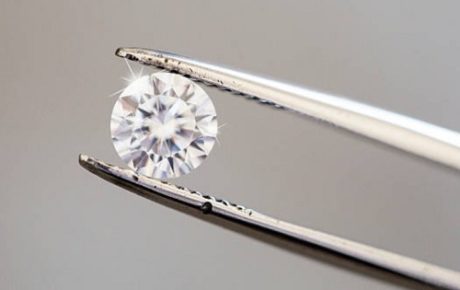


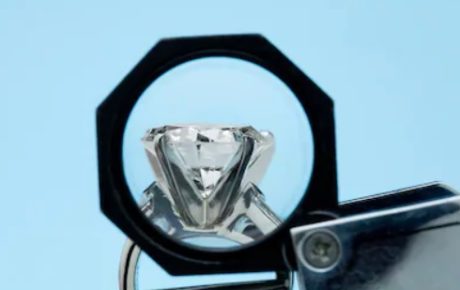









8 Comments
While we liked the initial review (virtual viewing) of a large selection of stones via James Allen site, and also speaking with their representatives on the phone, we have since been extremely dismayed with their policy to restrict / limit the physical viewing (in their NYC location) to ONLY ONE-TIME VISIT OF ONLY 3 STONES IN 50 minutes.
As you might appreciate, this restrictive policy limits a serious prospective buyer (as ourselves) to physically see/examine an extremely small sample size of 3 stones. To see only 3 stones from which you are expected to make a decision is incredibly ridiculous for such a critical purchase. This policy defies our logic and very well may preclude our ability to locate our “perfect” stone and hence our willingness to buy from James Allen.
We are going to look into White Flash, but if they don’t offer us the means to personally examine stones as opposed to simply buying on faith over the internet, then these internet sales don’t work for us.
Switching gears slightly, we saw a stone of interest that is IGI certified. We have grown confident in GIA, and a little uneasy about an IGI stone. What is your thoughts, opinion, advice?
ALSO: we have made contact with Designs by Kamni in NYC. They seem to offer the type of service that we desire. Do you have any intel on them (knowledge, recommendations, feedback, etc)?
For James Allen, it requires them to pay for shipping/insurance to bring in the stones of your choice for you to view. They have this upfront cost regardless of whether you decide to buy or not. For their model, I would say it is very very good. Other jewelers are going to CHARGE you a non-refundable deposit for each stone they bring in.
As for the time of 50mins, I am not sure whether this is the norm for them as they do have a very huge client base. They could have appointments coming up and scheduled. Here’s something you need to understand before you rant. If you go to a physical retailer and want to choose any 3 diamonds to view, expect to pay a non-refundable deposit to do so. JA is providing this to their clients with ZERO costs.
Anyway, this is something that can be improved and if you have walked into a physical store and do the shopping experience comparison for yourself, I think you are going to get even more turned off.
To scrutinize the diamonds, you should have done all the necessary stuff via their videos before you head in. It’s much much much easier and transparent that way.
IGI is not a reliable lab. Stick with AGS or GIA only.
I have no prior experience with Designs by Kamni but let me tell you that if cut quality is your priority, you will most likely not find the truly well cut stones there. Even at James Allen, you need to be extremely selective.
Now, for White Flash, they do own ALL their inhouse diamonds and this makes their business model slightly different. They have a physical showroom in texas, but really, viewing diamonds in person is unnecessary in today’s world and technological business environment. It’s easier to make rational decisions away from stores. The free returns guarantee risk-free purchases and you don’t get these kind of policies in store.
Go pay White Flash a visit if you are adamant on shopping in person.
https://beyond4cs.com/go/wf/
I am planning to purchase an engagement ring and I have been studying on your site which contains really really useful information.
After visiting 5 local jewellery stores I have limited my options down to 2 stones, and would very much appreciate if you can offer your second opinion.
Option 1: £11,950
1.4 carat round diamond, E SI1 Triple Excellent, with proportion in the attachment. I know it is a shallow stone with a measure of 7.32 x 7.35 x 4.34 which makes it look like a 1.5ct.
The HCA tool has given it an acceptable score of 1.4. And the sales assistant has also given us the Gem scope to inspect the stone, it has very clear arrows and hearts and I can at least tell there is no obvious white ring under the table.
In terms of the inclusion, once identified using the loop I can see it with naked eyes, but without knowing where to look for I’d say it is difficult to find the inclusion by just looking at it.
Option 2: £11,100
GIA Report number: 5191180486
This one I believe is a slightly deep cut, the store didn’t provide a scope to inspect but through the loop I can see clear arrows.
Because it is VS2, although the inclusion all seems to be gathered in one place I can confirm that even knowing where to look for it is not noticeable with bare eyes.
HCA has given it a score of 2.7. I understand from you site that I shall eliminate anything >2 but with my untrained eyes the stone still looks nice both in the store lighting and under natural lighting.
I think both options look nice in store lighting, and I don’t quite know what ‘excellent’ looks like under natural lighting. The problem here is that the above 2 options are not from the same store so I cannot compare side by side.
However for option 2, in the same store I had another 1.3ct stone (Report number: 7238400909, discounted because I can see the inclusion without first knowing where it is) with HCA score of 1.3, and with my untrained eyes I somehow cannot tell the difference between the performance of HCA 1.3 and HCA 2.7.
My question for option 1 is why HCA gives it a acceptable score even if it is obviously shallow? Shouldn’t shallow cut score badly in HCA? Is it possible for this shallow cut to not leak much light? Or have I obviously missed it when looking through the Gem Scope?
My question for option 2 is is it a good buy given the price and parameters? Given that I’ve compared side by side a HCA 1.3 and HCA 2.7 and cannot tell the difference will this be a reasonable purchase?
Any suggestions will be very much appreciated!
The HCA tool is not meant to be used in such a context and the diamonds you chose are mediocre. They don’t even pass my initial screening criteria.
https://beyond4cs.com/shapes/round/ideal-proportions/
If you are looking for H&A diamonds, there are only a few vendors in the world that specialize in them and you need to shop in the right places.
https://beyond4cs.com/best-place-to-buy-engagement-ring/
I have been reading a lot on beyond4cs.
You are doing an amazing and an honest job, it really is very refreshing to see someone write with knowledge and passion on such a sensitive topic. I also highly appreciate it when you describe something from the perspective of the common knowledge (which might be untrue) and then you clarify why it is thought of like that. Just brilliant.
I wanted to ask you a question, if you don’t mind of course, I am currently looking for a small diamond (for my small budget) but I am in Egypt. Is the GIA and AGS certifications available worldwide? and would diamond stores in Egypt have them? or I might find people saying “oh, no sir, we are in Egypt, we don’t have that stuff”?
Also, does the GIA or AGS provide reports only on certain sizes? meaning that the 0.25 karat that I am looking for could not be rated? or the sales persons would go “oh no sir, this is a very small stone to be rated!”
I cannot thank you enough for all of your explanation and efforts and can’t thank you enough in advance.
I have very limited experience in the local jewelry industry at Egypt. The last that I was there was in 2011 before things got chaotic.
For stones below 0.3 ct, it is reasonable that the diamonds don’t have grading reports but know that you are likely buying a misrepresented diamond. It’s just the way things work.
if you want to buy such a small diamond with a report, go to https://beyond4cs.com/go/briangavin/
Their cut quality is superb and they are the ONLY vendor in the world selling super ideal diamonds in the 0.2-0.3ct range with AGS reports.
Paul, much I follow and appreciate your expertise, GIA and AGI are certainly not the only gem labs to trust. You neglect to mention some of the labs in Europe such as Gublin in Switzerland and Hong Kong, Gublin being probably the most prestigious in the world
I didn’t neglect them. The fact is, if you want reliable gemological grading of a diamond that is consistent and reliable, GIA and AGS (that’s AGS with an S and not I) are the only labs consumers should trust if they don’t want to get ripped off. It’s as simple as that.